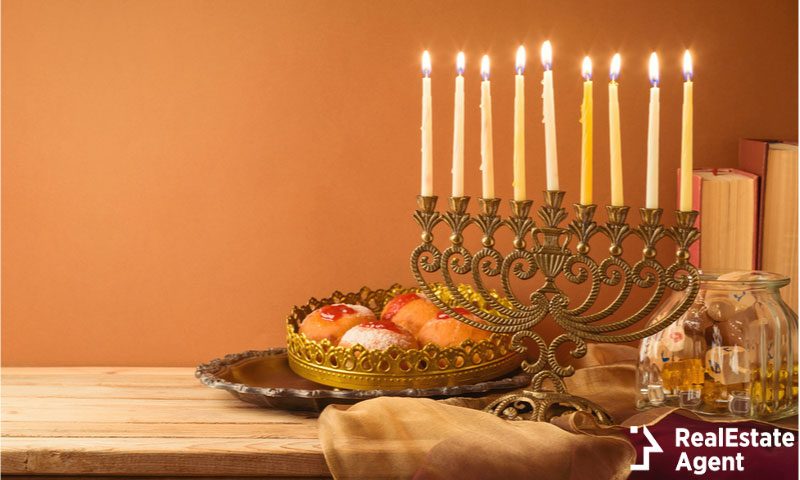Easter is one of the most beloved holidays throughout the world, but – like many things – it is differently experienced from culture to culture. Really. While here in the US colored hard-boiled eggs are the most recognized symbol of Easter festivities – the White House holds an annual egg hunt on its yard since the early 19th century! – in other countries, the symbols associated with the Holiday can be very different.
Northwestern Europe: Fire
Can you believe fire is the symbol of Easter in Germany and parts of Northwestern Europe? That’s because Northwestern Europeans traditionally light big bonfires on Easter Sunday and Monday to bring the community together while eating traditional snacks like Osterlamm (lamb) and Osterzopf (braided bread) and drinking gin and lager the night away. But why fire? Because, to them, the light produced by the flames chase the darkness of winter away, so the fire ultimately represents spring becoming victorious over winter.
Hungary: Liquids
Easter is so differently appreciated in each culture, that, of course, it was bound to also have the counterpart to fire representing the holiday. Yes, water can be considered one of Hungary’s Easter symbols, as “Sprinkling” is a Hungarian tradition. It is actually a sweet one: on Easter Monday, boys playfully sprinkle perfume, cologne or water over a young woman’s head and ask for a kiss. Sort of like an aromatized mistletoe, right?
Bermuda: Kites
Bermuda’s sky is filled with home-made kites on Good Friday. And the explanation behind that is funny: rumor has it that a teacher was having a hard time explaining to his students the Ascension of Christ. To better visualize it and make it more interesting, he built a kite (by assembling a crossed structure) and let it fly against the wind. Ever since that, Bermudians fly their kites on Easter and there are even competitions to award several categories. If you think this is cool and want to take part in it, there’s a category for “Best visitor kite”. But do your research so your kite is attractive; otherwise, you might have the displeasure of bringing home the “Ugliest kite” award.
France: Omelets
No, really; omelets. And not just any omelet; a gigantic omelet! Every Easter in the community of Bessieres (France) citizens make an omelet out of 15,000 eggs(!) and serve it to its population at the town’s main plaza. It is so big that it takes approximately 11 people to stir the giant pan! Not any random 11 people; all of them have to be members of the Giant Omelette Brotherhood of Bessieres. Those French… Legend says the French soldiers were in the south of France when Napoleon stopped by Bessieres and ate an omelet that tasted so good he ordered the whole city to follow the cook’s orders and make a giant omelet for his entire army.
Brazil: Judas
In Brazil, aside from presenting the family and friends with huge egg-shaped chocolate, it is a tradition to make a sort of piñata in the shape of Judas Iscariot (the apostle that betrayed Jesus) and hang it on the streets. Everyone that passes by it must get a stick and give Judas a beating. If you think that is a little harsh, you must take into consideration that Brazil is the country with the largest number of Catholics in the world, so it’s only natural that they “avenge” Jesus Christ. Or maybe it’s because Brazilians are just affectionate people? After all, they do also lynch politician’s piñatas sometimes…
Bulgaria: Fights
Talking about violence, in Bulgaria you don’t find the eggs, you take them! It’s a big egg-fight in front of the church. The last person with an unharmed egg is declared the victor and keeps the egg with him/her until next Easter, as it becomes a symbol of luck and success for the coming year. Another peculiar tradition is for the oldest woman in the family to get the first red egg she has colored and… rub it against children’s faces! They do it because rosy cheeks are a symbol of health and strength, so, although it seems like a harsh action, it’s nothing but well-wishing by those women. Bulgarians have a strange way of showing affection, huh?
Romania: Candles
One night before Easter (Saturday), Romanians gather around the church with the lights all turned down. At midnight, pitch black, the Priest lights a candle and pass the flame from his candle to the candle of another person and so on and on, hand in hand; a metaphor for Christ, reborn to bring light to darkness. After everyone’s candle is lit, Romanians circle the church 3 times. If the wind doesn’t blow the candle out after those 3 times, it means the faith is strong with that person, who usualy keeps the candle with him/her until the next year, as a token of good luck.
Greece: Pots
If you’re walking on the streets of Greece during the Holy Saturday morning, beware of falling pots, pans, and other pottery, because people throw them out their windows, smashing them on the streets with no care! They believe doing this welcomes Spring, as that action makes room for the new crops that will be gathered in new pots.
As you can see, Easter has many faces and symbols. But the most important thing seems to be a constant regardless of the culture: holidays are a time to surround yourself with the ones you love and celebrate.
Happy Easter, everyone!
Want to know a Real Estate Easter Tradition? Easter Sunday is actually one of the best times to buy a house! Learn more by visiting our Best– and worst – times to buy a house blog post!
And find an agent at The OFFICIAL Real Estate Agent Directory® to help you navigate the real estate world!

















I’d like to share how Easter is celebrated in the United States.
In the United States of America Easter is celebrated by remembering the death burial and resurrection of our Lord and Savior Jesus Christ.
We begin with Good Friday service and remembering how Judas betrayed Jesus for 30 pieces of silver and how Jesus was crucified for the sins of the whole world.
Jesus was buried in a borrowed tomb and remained there for 3 days. But, on the 3rd day God the Father, creator of the universe raised Jesus from the grave.
That’s how and why we celebrate Easter in the United States. Because it is the reminder of the death, burial and resurrection of our Lord and Savior Jesus Christ.
Thanks again for sharing about Easter. I hope you enjoyed reading about how and why we celebrate Easter in the United States.
You are right, Lucille! Thank you for reading our blog.